Realistically detailed model of Europe’s new space observatory

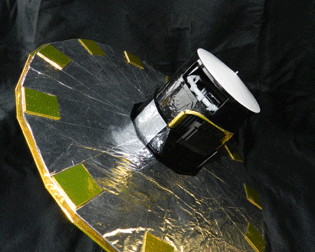
Having already made several models of Britain’s UKube satellite we were pleased to get this new commission for a model of the European space Agency’s latest spacecraft being launched in October this year. As you can see from the images, large areas of this spacecraft are composed of different coloured, highly reflective fabrics and we needed to replicate the uneven, shiny character of these materials on the model. We also had to create a representation of the optical bench (complete with concave mirrors) inside the main body of the spacecraft. It is hard to see in these photos but it is just visible through the “window” openings. Since completing the model, we’ve actually been commissioned to produce three further copies for the UK Space agency.
Two more industrial models – Sub-sea control module & Ukube Satellite.
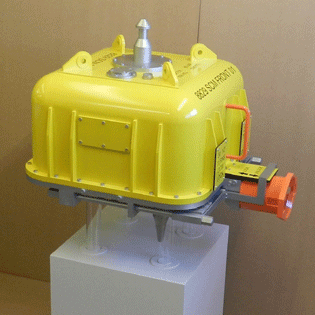
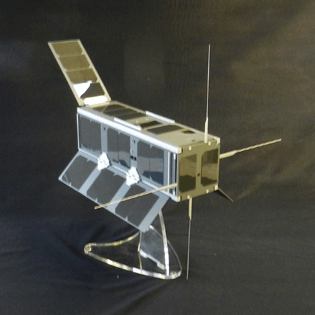
Not all the models we make are scaled down to a smaller size. These two industrial models are both life-size replicas of the real thing. The subsea control module is about 900mm square and was commissioned because the client wanted a lightweight version of the product to take to exhibition venues. The real unit was extremely heavy and difficult to transport whereas our lookalike version, made from thin plastics, could be easily lifted by two men. The Ukube satellite model, made for the UK Space agency, was unusual in that the original satellite was only about 350mm long so there was no need to scale it down. We’ve actually made four of these satellite models with possibly more to follow. They’re used for educational presentations and were made with working hinges so that the solar panels and antennae could be deployed in the same way as the real thing.
Demonstration Model for Utility Oils
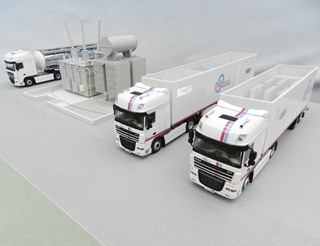
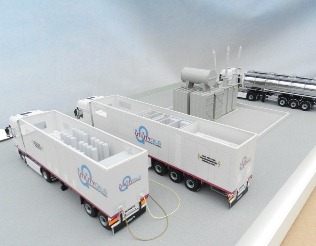
The purpose of this model was to demonstrate this company’s fleet of new, purpose-built trailers supplying mobile oil related services to industry. We were able to buy “off the shelf” DAF tractors and brand them with the company’s livery but the trailers had to be built from scratch to incorporate a simplified representation of the client’s oil processing equipment. The roofs of the trailers look as though they have been left off but they are actually made from clear 0.5mm acrylic to allow views into the interior whilst protecting the internal components. The transformer installation was also made from scratch, at a slightly simplified level.
Button controlled model for Northern PowerGrid
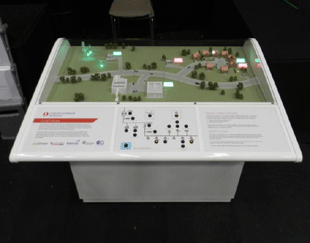
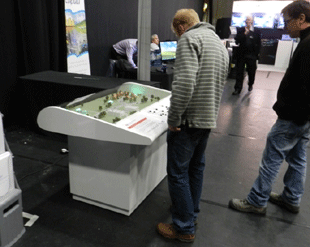
CLNR stands for Customer Led Network Revolution, a method of optimizing the power supply network based on immediate reaction to varying customer demands. The purpose of this model was to illustrate Northern Powergrid’s strategies for maximizing the efficiency of their supplies to both domestic and commercial users. The model looks deceptively simple but actually features some complex programming to demonstrate how the network adjusts to the demands of different users at different times of the day, including storing surplus power for later use. The button panel allows the user to set up varying power requirements which are indicated by lights on the model (turning red) and then press further buttons that illustrate how the demands are resolved (turning the lights green) with energy efficient systems and procedures.
“Drivetrain” for wind turbine – Scale 1:20
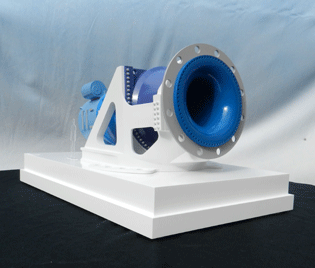
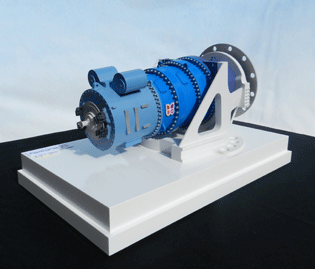
A “Drivetrain”, in case you were wondering, is the component that harnesses the power from the revolving blades of a wind turbine – it’s the machinery the blades are connected to at the top of the tower, normally hidden under a cowling. This particular model was commissioned for use as an eye catching display at trade shows and exhibitions. It was designed to illustrate the flexible, modular nature of the client’s product which could be easily adapted for different types of wind turbine. Taking the real thing along wasn’t really an option due to its massive size and weight. If you click on the images to enlarge them, you’ll see the outline of a standing figure which gives a sense of the machine’s real life dimensions. At 1:20 scale we were able to show a plenty of realistic detail, including individual nuts and bolts and the huge single disc brake with four callipers on the back face of the model.